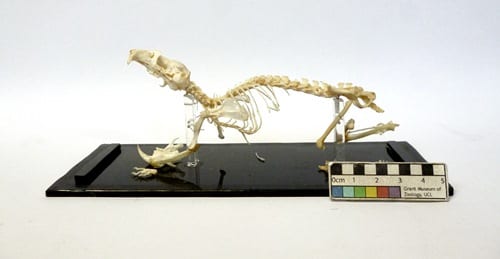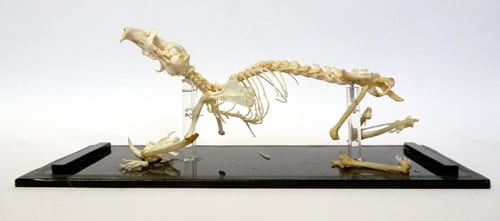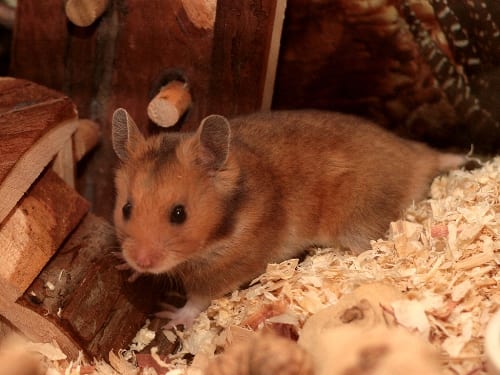Specimen of the week 264: the golden hamster
By Will J Richard, on 4 November 2016
Hello e-people. Will Richard here and it’s specimen of the week time again. And this week I’ve gone for a chubby-cheeked favourite. There are about 400,000 of these charming little creatures kept as pets in the UK alone. That’s right it’s the…
**golden hamster skeleton**
Baby boomers
The golden hamster (Mesocricetus auratus) is a nocturnal, herbivorous rodent native to southern Turkey and northern Syria. They are fiercely territorial and do not tolerate other adult hamsters near them, the only exception being when a male and female meet to mate. Golden hamsters have the shortest known gestation period of any placental mammal. Females can give birth to over 20 pups just 16 days after mating and the babies can breed themselves at just one month old. So, in theory, a productive hamster born on Halloween could be a grandparent more than 400 times by the New Year.
Historical hamsters
Now there are millions of domestic hamsters worldwide. It might seem odd therefore to imagine a time without them but they are actually quite a recent addition to our pet shops. Studies based on their mitochondrial DNA (which is only inherited maternally) suggest that all domestic hamsters are descended from a single female and for that we have to thank a single man: Israel Aharoni. In 1930 he led an expedition to the region surrounding Aleppo where he found and captured a single female and her eleven babies. Unfortunately her natural instinct to panic-eat her children took over, so she was quickly removed and Aharoni set about raising her ten remaining orphans. Of these six escaped (some accounts say they died… so the escape could be metaphorical) but the other four did what hamsters do best and soon Aharoni was supplying their offspring to colleagues all over the world. The first to arrive in the UK were kept at the Wellcome Bureau of Scientific Research, a precursor to the Wellcome Trust, which was at that time based in Gordon Square (two minutes from the Grant Museum). London Zoo acquired their first in 1932 and golden hamsters spread quickly, becoming popular pets in the 1940’s.
Back home
Back in the wild things are not looking quite so rosy. Golden hamsters are now limited to disconnected patches of habitat along the Syrian/Turkish border and the IUCN estimated in 2007 that there could be fewer than 2,500 adults left. This is thought to be decreasing as agricultural practices and land use change though, obviously, there is no recent data. It is very difficult to know what effect the prolonged conflict in the region may have had.
References:
http://www.pfma.org.uk/pet-population-2014
Henwood, Chris (2001). “The Discovery of the Syrian Hamster, Mesocricetus auratus“. The Journal of the British Hamster Association (39)
http://www.iucnredlist.org/details/13219/0
Will Richard is Visitor Services Assistant at the Grant Museum of Zoology
One Response to “Specimen of the week 264: the golden hamster”
- 1
 Close
Close





Love this blog, thanks Will!